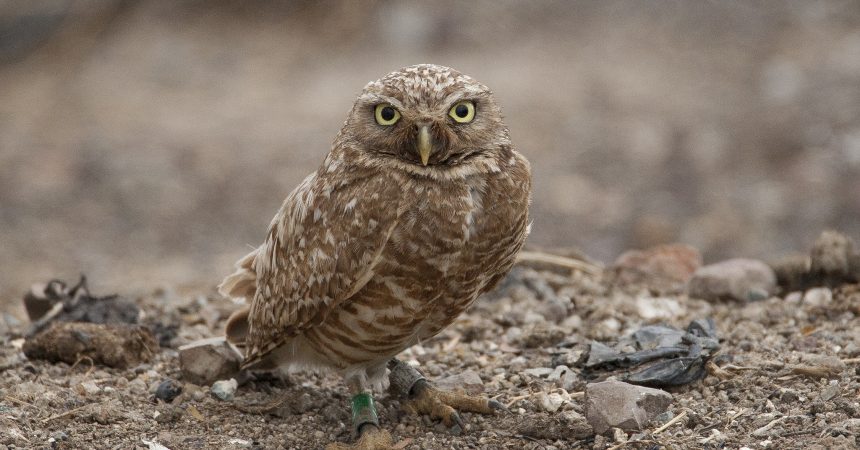
Burrowing Owls Get New Digs in Jamul
Conservationists Use “Active Translocation” Method to Jumpstart a New Colony
A colony of Western burrowing owls moved into new homes this month, after conservationists made the decision to relocate the colony as part of a long-term strategic plan to conserve the species in the region. A conservation team from the U.S. Fish and Wildlife Service, California Department of Fish and Wildlife, City of San Diego, County of San Diego, and other organizations moved a group of 5 pairs of burrowing owls from Brown Field Municipal Airport in Otay Mesa, Calif. to Rancho Jamul Ecological Reserve in Jamul, Calif. Using “active translocation” techniques, the team captured the birds in Otay Mesa and released them into acclimation enclosures with human-made burrows installed on the protected ecological reserve site, which is owned and managed by the California Department of Fish and Wildlife.
The move is part of a multi-agency conservation strategy that has been developed over the past 7 years that includes monitoring the existing population while searching for suitable habitats to establish new colonies throughout San Diego County. Conservationists hope these birds, which could have been impacted by planned development in Otay Mesa, will now have a secure place to breed and establish a second breeding node in the county—reducing the risk of local extinction.
“All of the burrows currently have eggs in them,” said Colleen Wisinski, conservation program specialist for San Diego Zoo Global. “The birds have hopefully realized that it’s a safe place, and they would want to try to breed here. So, we are really excited to see what they do over the next several months or years if they stick around.”
Western burrowing owls are small, long-legged birds that live in open landscapes of North and South America. Unlike other owl species that live in trees, these owls make their homes in abandoned California ground squirrel burrows, prairie dog burrows, or rattlesnake dens. They then use their long legs to further excavate these underground tunnels, creating enough room to store food and lay eggs.
As their numbers continue to decline throughout western regions of North America, the state of Californian has listed them as a Species of Special Concern due to multiple factors, including continued habitat loss. Burrowing owls are grassland specialists and require short open grassland to thrive. Unfortunately, intact native grasslands are rare in Southern California, and the suitable habitats that remain are severely impacted by increased human development. Land developers have been using a less-costly method to move the birds, called “passive relocation”—a practice in which the owls are forced from their burrows, with the hope that they will resettle on their own in nearby natural or artificial burrows. So far, the owls’ survival rates are still unknown for passive relocation, so researchers are studying both passive and active relocation methods, to see which one best improves relocation outcomes.
“Burrowing owls are part of our natural history and part of the natural ecosystem of the region,” said Wisinski. “The information will not only show us how the owls are doing, but also help us to know what we can do as conservationists to help them sustain their vital populations.”
The conservation team will continue to monitor the Jamul owl colony over the next few years, watching for successful breeding and settlement as the owls become familiar with the area.














